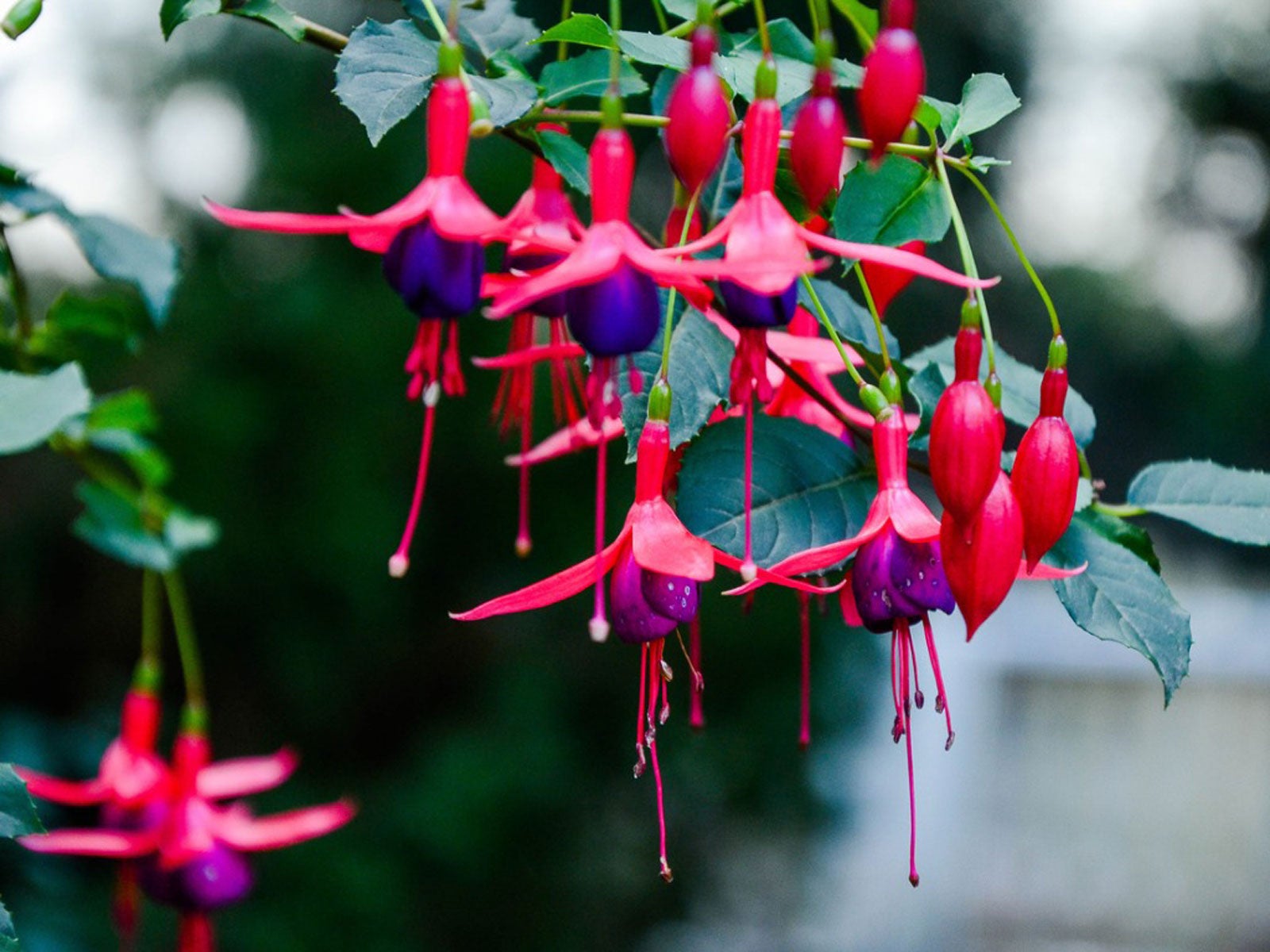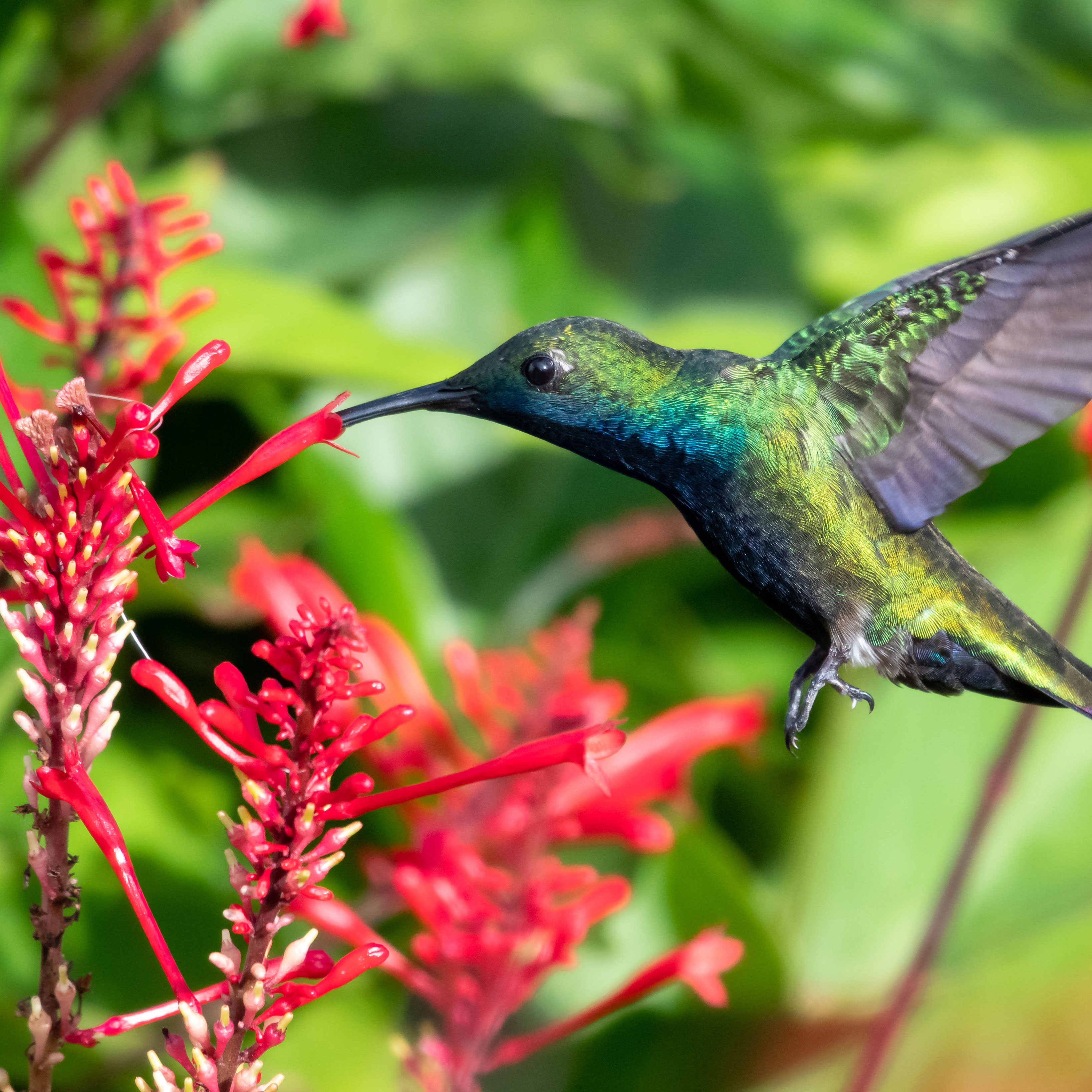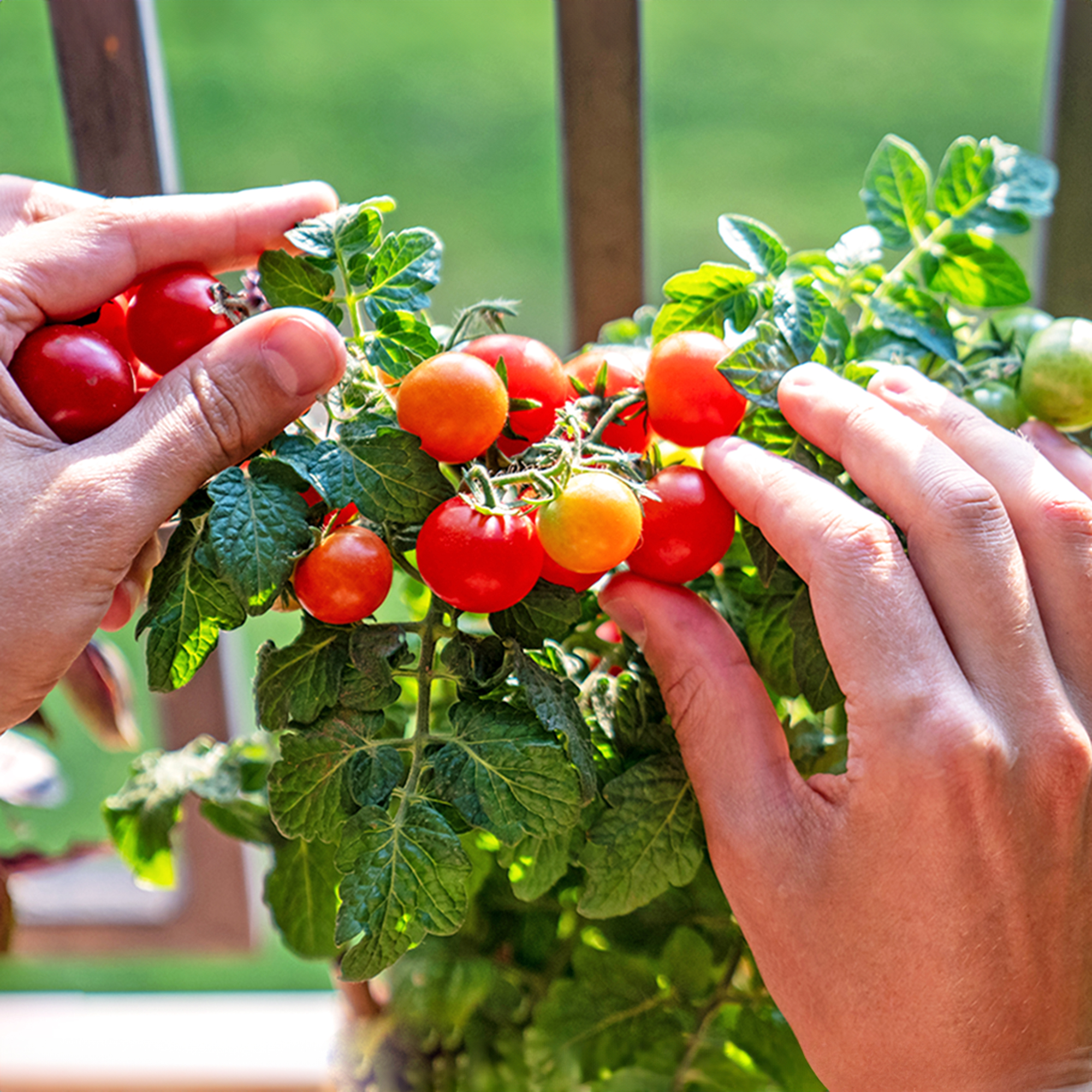Growing Fuchsia Flowers - Care Of Fuchsias
Fuchsias come in many varieties and colors. They don’t require constant maintenance but do need attention. Click here for growing tips.


Beautiful, delicate fuchsias come in thousands of varieties and colors, with multi-colored blossoms that hang and droop beautifully from baskets, planters, and pots. Often trellised in the garden, fuchsia plants can be bushy or vining and trailing.
Wild fuchsias, native to Central and South America, grow profusely in the Andes where temperatures are cool and the air is moist. Fuchsias were named after a 16th century German botanist – Leonard Fuchs. They don’t require constant maintenance, but do plan on paying attention to them. Read on for more fuchsia growing tips.
Quick Facts about Fuchsia
- Botanical name - Fuchsia spp.
- Height - 12-24 inches (30-60 cm)
- Spread - 12-24 inches (30-60 cm)
- Sun exposure - Part Shade, Full Shade
- Soil requirements - Moist, pH 6.0-7.0
- Hardiness zones - USDA Zones 10-11
- When to plant - Spring
Tips for Fuchsia Care
Fuchsias are worth the time it takes to maintain a proper environment for them. Care of fuchsias is not necessarily low maintenance, but with a little special attention their beauty is worth a bit of extra effort.
Soil
In order to thrive, fuchsia plants require nutrient-rich soil with a pH level of 6 to 7. This means most garden soils will need amendment before planting. Container-grown plants benefit from the use of a high-quality potting mix, with added peat or other organic material for improved drainage.
Fertilizer
Commonly referred to as a heavy feeder, fuchsia plants perform best where they receive routine fertilization. Slow-release fertilizers are ideal for use in outdoor beds while hanging baskets and containers prefer liquid feeds. Starting in the spring, balanced fertilizers can be applied once every two weeks throughout periods of active growth. Diluted fish emulsion works beautifully.
Water
Consistent soil moisture is important in keeping fuchsias looking their best. Both under and overwatering can be problematic, causing much distress to the plant. Sudden wilt of plants is often among the first indicators that the soil has become too dry. If you're planting fuchsia in containers, you'll need to water at an even greater frequency, at least once per day.
Light
Fuchsia plants should be situated where they're able to receive ample shade. Though morning light may be helpful in the production of flowers, covering throughout the hottest parts of the afternoon will help to keep the plants hydrated.
Gardening tips, videos, info and more delivered right to your inbox!
Sign up for the Gardening Know How newsletter today and receive a free copy of our e-book "How to Grow Delicious Tomatoes".
Temperature
Fuchsias love lots of filtered light but are particularly intolerant of heat. Making sure your fuchsia baskets or planters have plenty of dappled shade and daytime temperatures well below 80 degrees F (27 C) will encourage a healthy bloom. Fuchsias also prefer cooler nighttime temperatures. If you’re expecting a period of hot summer weather, it’s good to have a backup plan for sheltering your fuchsia plants to support their blooming activity through the summer.
Indoor Care
If you’re growing fuchsias indoors, a window with bright, indirect sunlight works best. However, they do like humidity and will languish if the air is too dry, whether indoors or out.
Fuchsia blossoms are a wonderful treat for pollinators, so expect plenty of bees and hummers if you’re growing them outside.
Pruning
Fuchsias plants thrive and blossom more abundantly if they’re pinched back as new growth appears. When a branch has finished blooming, clip it back with clean garden shears.
Fuchsias are known for their repeating tendency and ability to drop spent blooms. You may still want to deadhead them on a weekly basis to keep a tidier appearance.
Training or pruning fuchsias may also be required, specifically in cases where landscapers desire the plant to maintain a more formal tree-like form.
How to Propagate Fuchsia
Propagation by cuttings is a popular means to multiply your fuchsia plants. Taking cuttings helps you increase the number of plants, and can allow you to overwinter your favorite cultivars. Stem sections of this plant can be rooted easily in water, or through more traditional means. You can expect cuttings placed in soil to have successfully rooted in as little as 1-2 weeks.
Problems, Pests, & Diseases
Fuchsia plants seldom have problems with disease. Hybrid fuchsias are especially known for their dependability and resistance to common garden pests. But, insects like mealy bugs or aphids may frequent the plant.
Check for signs of damage by inspecting each plant carefully on a weekly basis, especially at the junctures of stem and leaf. Treat the plants with neem oil and insecticidal soap when necessary. You may want to introduce some beneficial insects to keep the bad ones away.
How to Overwinter Fuchsia Plants
Fuchsia care in winter can vary depending upon the species and your garden zone. While some types of fuchsia are considered half-hardy and will die back to the ground in winter, others may be completely lost with the arrival of the cold.
If you live in zones 10 or 11, your fuchsia may behave as a perennial, but in colder zones you may need to replant in spring or move your plants indoors for the winter. Snip off any dead leaves and stems and keep your plant in a cool dark environment, watering only every third or fourth week throughout the dormant period. It won’t look great, but in early spring with some fresh sunlight, water, and food, it should spring back to life.

Caroline Bloomfield is Manager of Marketing Communications at Gardening Know How since 2019. A northwest native, she has resided and gardened in multiple zones in the U.S. and is currently at home in Bandon, Oregon. Writing and editing for various publications since 1998, her BA in American Studies from Southern Maine University includes an emphasis in English. She was raised in California by avid gardeners and continues to enjoy the natural world with an appreciation for the concepts of sustainability and organic care for the planet.
-
 Terrifically Tubular Flowers For Hummingbirds: 9 Tube-Flowered Plants To Attract Hummers
Terrifically Tubular Flowers For Hummingbirds: 9 Tube-Flowered Plants To Attract HummersGrowing tubular flowers for hummingbirds helps you create the optimum feeding conditions for your winged friends. Here are nine tubed delights for hummers
By Tonya Barnett
-
 How To Grow Hydroponic Tomatoes For Fresh Indoor Harvests – No Soil Required
How To Grow Hydroponic Tomatoes For Fresh Indoor Harvests – No Soil RequiredLearning how to grow tomatoes in water is easy and allows you to harvest fresh-home-grown produce in every season without any mess.
By Ellen Wells